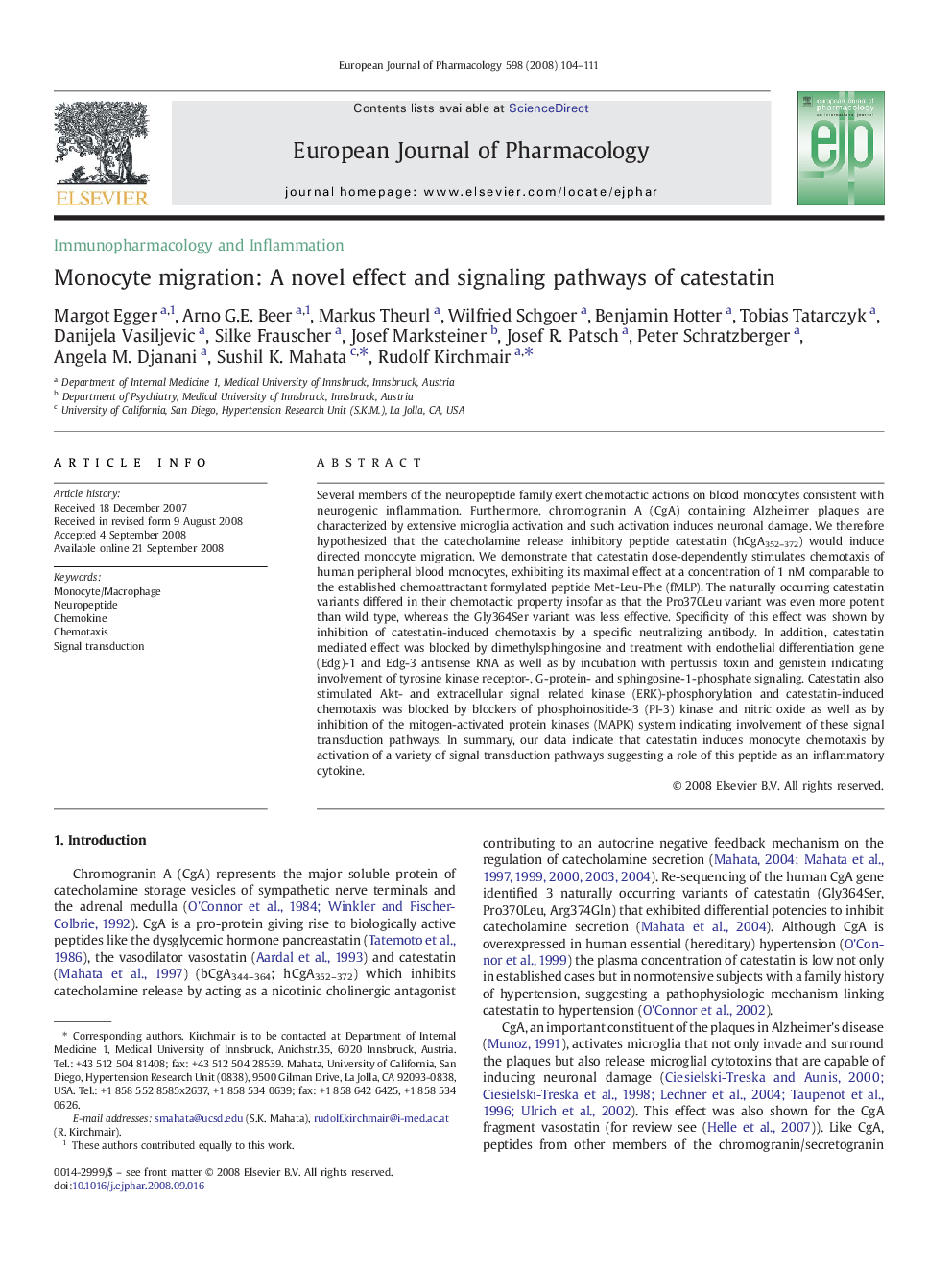| Article ID | Journal | Published Year | Pages | File Type |
|---|---|---|---|---|
| 2534737 | European Journal of Pharmacology | 2008 | 8 Pages |
Several members of the neuropeptide family exert chemotactic actions on blood monocytes consistent with neurogenic inflammation. Furthermore, chromogranin A (CgA) containing Alzheimer plaques are characterized by extensive microglia activation and such activation induces neuronal damage. We therefore hypothesized that the catecholamine release inhibitory peptide catestatin (hCgA352–372) would induce directed monocyte migration. We demonstrate that catestatin dose-dependently stimulates chemotaxis of human peripheral blood monocytes, exhibiting its maximal effect at a concentration of 1 nM comparable to the established chemoattractant formylated peptide Met-Leu-Phe (fMLP). The naturally occurring catestatin variants differed in their chemotactic property insofar as that the Pro370Leu variant was even more potent than wild type, whereas the Gly364Ser variant was less effective. Specificity of this effect was shown by inhibition of catestatin-induced chemotaxis by a specific neutralizing antibody. In addition, catestatin mediated effect was blocked by dimethylsphingosine and treatment with endothelial differentiation gene (Edg)-1 and Edg-3 antisense RNA as well as by incubation with pertussis toxin and genistein indicating involvement of tyrosine kinase receptor-, G-protein- and sphingosine-1-phosphate signaling. Catestatin also stimulated Akt- and extracellular signal related kinase (ERK)-phosphorylation and catestatin-induced chemotaxis was blocked by blockers of phosphoinositide-3 (PI-3) kinase and nitric oxide as well as by inhibition of the mitogen-activated protein kinases (MAPK) system indicating involvement of these signal transduction pathways. In summary, our data indicate that catestatin induces monocyte chemotaxis by activation of a variety of signal transduction pathways suggesting a role of this peptide as an inflammatory cytokine.
